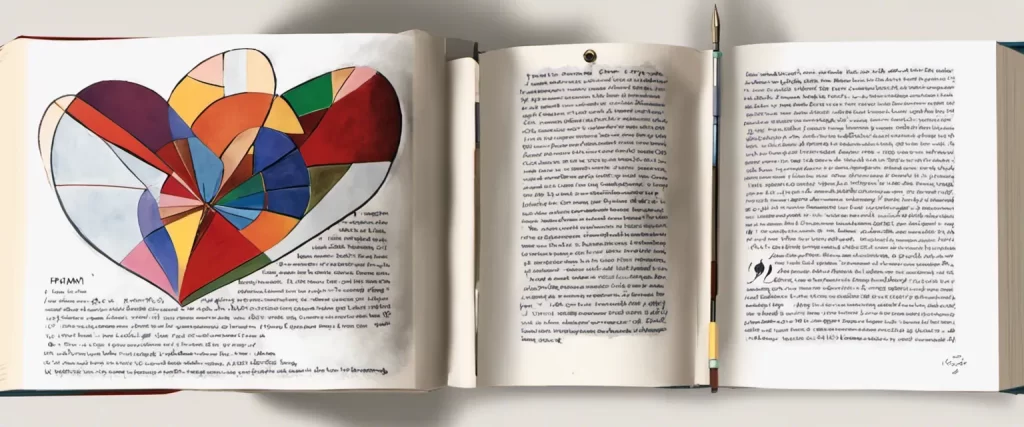——The Art of Loving by Erich Fromm & Solitude by Anthony Storr
In a world filled with connectivity and constant social interactions, it is becoming increasingly challenging to find solace and meaningful connections. Love and solitude, seemingly contrasting concepts, have emerged as two significant realms of exploration in the realm of human psychology and relationships. Unveiling the intricate dynamics of interpersonal affection and individuality, Erich Fromm’s “The Art of Loving” and Anthony Storr’s “Solitude” stand as two thought-provoking literary works that poignantly delve into these primal aspects of the human experience.
Fromm’s “The Art of Loving” serves as a timeless guide, exploring the depths of love and its transformative potential. Published in 1956, Fromm challenges conventional notions of love by emphasizing that it is not merely a fleeting emotion, but rather a skill to be cultivated and practiced. Drawing upon psychological, philosophical, and sociological perspectives, Fromm dissects the intricate layers of love, dissecting its various manifestations: brotherly love, motherly love, erotic love, and self-love. Through his work, the author aims to liberate individuals from the superficiality of modern relationships, encouraging them to embrace love as a profound expression of one’s true self.
On the other hand, Anthony Storr’s “Solitude” offers a profound exploration of the human need for aloneness and introspection. Published in 1988, this work posits that solitude is not synonymous with loneliness but rather an essential element in individual growth and self-discovery. Storr argues that society often stigmatizes solitude, misinterpreting it as a state of isolation or withdrawal from society. In contrast, he asserts that it is in solitude that the mind expands, creativity flourishes, and personal reflection thrives. By examining the lives of historical figures and drawing upon psychological insights, Storr invites readers to question their preconceived notions of solitude and embrace the transformative power it can hold.
While fundamentally distinct in their theme and focus, Fromm’s “The Art of Loving” and Storr’s “Solitude” share a common thread in their exploration of human emotions and the integral role they play in fostering personal growth and fulfillment. Both authors advocate for a move away from societal norms, encouraging readers to develop a deep understanding of themselves, their relationships, and the world around them. Through their distinct lenses, Fromm and Storr illuminate the intricate dance between love and solitude, inviting readers on a profound journey of self-discovery and inner fulfillment.
This comparative study aims to delve into the similarities and differences between these two influential works, unearthing the underlying threads that bind them together while acknowledging their unique contributions. By examining their respective theories, exploring the varying perspectives they offer, and critically analyzing their impact on our understanding of love and solitude, we seek to gain a deeper appreciation for the richness and complexities of human connections and individuality.
Brief Summary of Two Books
The Art of Loving by Erich Fromm
The Art of Loving” by Erich Fromm is a 1956 self-help book that explores the nature of love and its role in human experience. Fromm argues that love is not just a feeling or a romantic notion; it is a skill that can be developed and mastered through practice. He emphasizes that love requires effort, knowledge, and discipline.
Fromm examines various forms of love, including romantic, brotherly, motherly, and self-love. He critiques the modern understanding of love, which often reduces it to mere passion or dependency. Instead, he proposes that love should be seen as an act of giving, rather than receiving. Love, according to Fromm, is not something we fall into or out of; it is an ongoing process that requires continuous effort and commitment.
The author also explores the obstacles to love, including selfishness, narcissism, and societal influences. He discusses the concept of productive love, which involves caring for the growth and well-being of the loved one, rather than seeking personal gratification. Fromm emphasizes the importance of self-love as a prerequisite for loving others, as one cannot truly give love if they cannot love themselves.
Overall, “The Art of Loving” offers a deep analysis of the complexities of love and provides practical guidance on developing healthy, fulfilling relationships. Fromm’s exploration of love as a skill rather than simply an emotion makes this book a timeless and thought-provoking read for anyone interested in understanding and cultivating love in their lives.
Solitude by Anthony Storr
“Solitude” by Anthony Storr is a thought-provoking book that delves into the importance of solitude in an increasingly interconnected world. Storr emphasizes the significance of solitude for personal growth, creativity, and overall psychological well-being. Drawing from various disciplines such as psychology, literature, and philosophy, he explores how solitude can provide an opportunity for self-reflection, introspection, and the development of individuality. Storr also challenges commonly held beliefs that solitude is synonymous with loneliness and isolation, arguing instead that it can be a source of inspiration and rejuvenation. By examining the lives of notable figures like Charles Darwin, Beethoven, and Freud, the author elucidates how these individuals utilized solitude to flourish in their respective fields. Overall, “Solitude” offers a thought-provoking perspective on the benefits of embracing and understanding solitude in our fast-paced and interconnected modern world.
Comparison between Two Books

Similarities in Know Yourself
In both “The Art of Loving” by Erich Fromm and “Solitude” by Anthony Storr, the concept of knowing oneself plays a significant role. Here are some similarities in how these books explore the idea of self-knowledge:
1. Inner exploration: Both authors emphasize the importance of delving into one’s inner self to develop a deeper understanding of oneself. Fromm asserts that knowing oneself is an ongoing process that requires constant self-examination to uncover our true desires, needs, and values. Similarly, Storr emphasizes the need for self-reflection and examining one’s own thoughts and emotions to gain insight into personal identity.
2. Self-acceptance: Both books highlight the necessity of accepting oneself entirely, including acknowledging both strengths and weaknesses. Fromm argues that self-love can only be achieved by fully accepting oneself, while Storr suggests that self-acceptance allows individuals to lead more authentic and fulfilling lives. In both works, knowing oneself involves embracing all aspects of one’s personality and being comfortable with oneself.
3. Separation from external influences: Fromm and Storr agree that knowing oneself requires distinguishing one’s true desires and thoughts from external pressures and societal influences. Fromm emphasizes the importance of resisting social conditioning and attaining personal autonomy, while Storr suggests that periods of solitude can facilitate the removal of external distractions, helping individuals gain clarity about their own values and aspirations.
4. Emotional awareness: Both authors stress the significance of emotional self-awareness as a means to know oneself better. Fromm suggests that understanding one’s emotional tendencies provides insights into the deepest aspects of one’s being, allowing for personal growth and fruitful relationships. Similarly, Storr argues that emotional introspection is crucial for individuals to understand and express their needs, experiences, and desires accurately.
5. Life’s purpose: Fromm and Storr both emphasize the importance of discovering one’s purpose in life as part of knowing oneself. Fromm proposes that self-discovery involves finding and pursuing a life goal that aligns with our true desires and values. Similarly, Storr suggests that understanding oneself allows individuals to tailor their life choices to their unique aspirations, leading to a sense of purpose and fulfillment.
Overall, both “The Art of Loving” and “Solitude” share the belief that self-knowledge is a transformative and essential journey towards personal growth, acceptance, and finding meaning in life. These books highlight the significance of introspection, self-acceptance, emotional awareness, and the separation from external influences as crucial aspects of the process of knowing oneself.
Divergences in Know Yourself
The Art of Loving by Erich Fromm and Solitude by Anthony Storr both explore aspects of human connection and self-discovery, but they diverge in their perspectives on “Know Yourself.”
In The Art of Loving, Fromm emphasizes the importance of self-awareness and self-understanding as the foundation for experiencing true love and connecting with others. According to Fromm, knowing yourself involves actively engaging in self-reflection, understanding your own desires, fears, and limitations, and developing the ability to take responsibility for your actions and emotions. He believes that self-love is crucial in order to genuinely love others, as it requires acknowledging one’s own needs and cultivating a sense of inner security. Fromm contends that knowing oneself is an ongoing and lifelong process, requiring continuous self-examination and growth.
On the other hand, Solitude by Anthony Storr presents a different perspective on self-discovery. Storr argues that solitude is an essential component for personal growth and self-understanding. He contends that solitude allows individuals to engage in introspection and reflection, enabling them to gain a deeper understanding of their true selves. However, Storr suggests that solitude does not necessarily entail endless self-analysis or an explicit effort to “know” oneself. Instead, he believes that true self-knowledge often arises naturally from experiences of solitude, contemplation, and solitude-induced creativity. Storr implies that seeking to “know oneself” too directly may even be counterproductive, as it can potentially lead to obsessive self-scrutiny or the creation of a fixed self-identity that inhibits personal growth.
Therefore, while both books acknowledge the importance of self-discovery, they diverge in their approach to the concept of “Know Yourself.” Fromm places a stronger emphasis on the active pursuit of self-understanding and self-love, involving continuous introspection and taking responsibility for one’s emotions and actions. On the contrary, Storr suggests that self-knowledge often emerges more naturally through solitude and introspection, cautioning against excessive self-analysis or rigid self-identifications.

Conclusion
Both “The Art of Loving” by Erich Fromm and “Solitude” by Anthony Storr are highly regarded books that offer valuable insights into different aspects of life. Ultimately, the decision of which book is more worthy of reading depends on individual preferences and areas of interest.
“The Art of Loving” explores the nature of love and its significance in human life. Fromm delves into various aspects of love, including self-love, brotherly love, motherly love, and romantic love. He analyzes how love can be developed and nurtured, highlighting the importance of understanding, commitment, and mutual respect in relationships. This book provides profound insights into the complexities of love, making it a worthwhile read for those interested in exploring the dynamics of human connection.
On the other hand, “Solitude” by Anthony Storr delves into the concept of solitude and its role in personal growth and creativity. Storr argues that solitude is essential for self-discovery and development, outlining how solitude has been influential in the lives of many great thinkers, artists, and leaders throughout history. This book provides a thought-provoking analysis of the benefits of solitude and its potential to enrich one’s life.
Ultimately, it is recommended to read both books if possible, as they offer different perspectives on fundamental aspects of human existence. The Art of Loving delves into the complexities of love and relationships, while Solitude explores the value of self-reflection and solitude. The book that may be more worthy depends on personal interests, goals, and the subject matter that resonates most with the individual reader.



